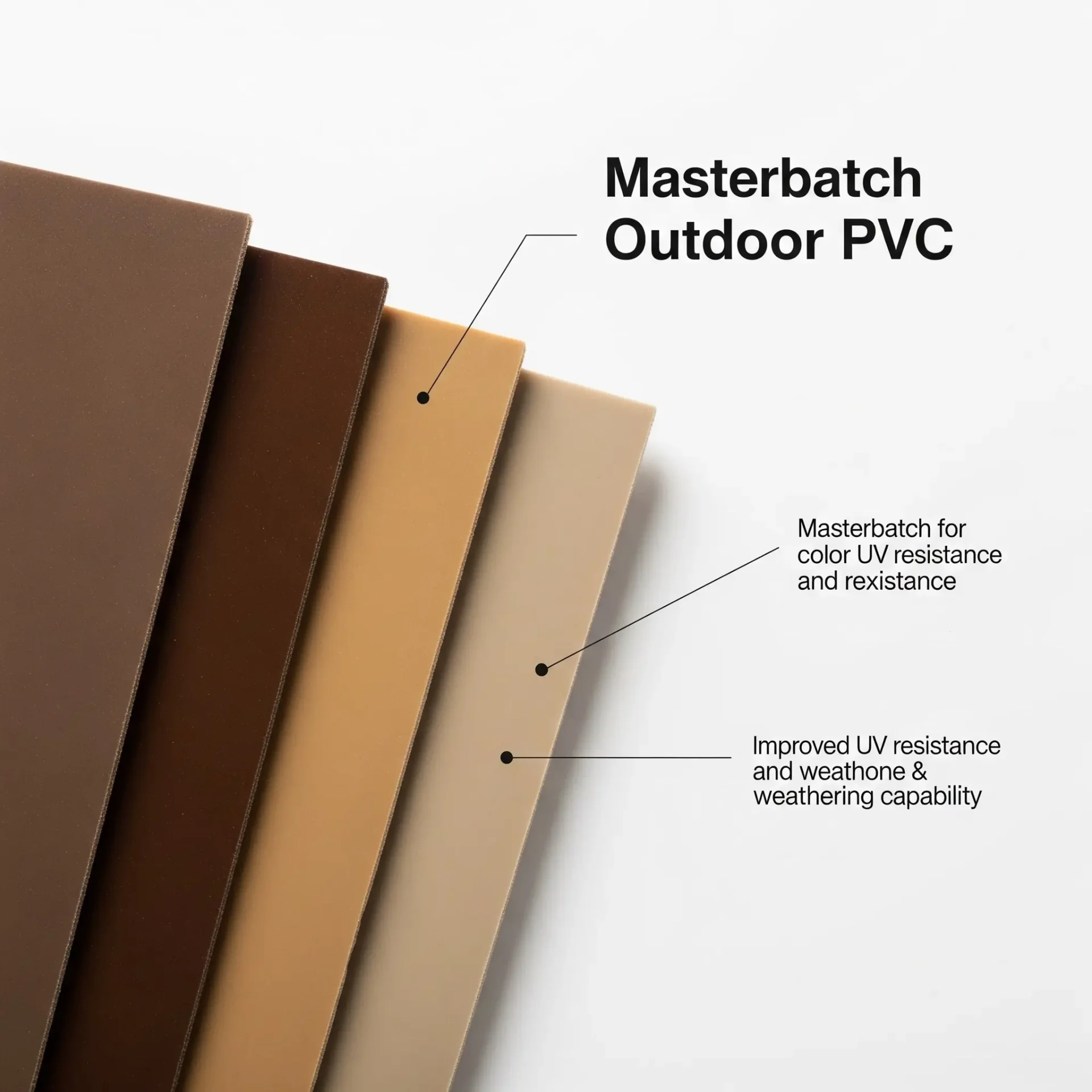PVC is one of the most versatile and widely used polymers in the industry thanks to its excellent balance between cost, processability, and mechanical properties. However, when exposed to outdoor conditions for extended periods, it can undergo degradation processes that affect its appearance, color, and structural integrity. Ensuring PVC stability in outdoor applications requires an understanding of its degradation mechanisms and the implementation of technically sound solutions. Additionally, the use of specialized masterbatch allows for the efficient integration of pigments and stabilizing additives, facilitating PVC outdoor protection without compromising production quality.
Page Contents
What factors affect PVC outdoors?
PVC products used in outdoor applications (such as profiles, cladding, pipes, hoses, or cables) are constantly exposed to a combination of environmental factors:
- UV radiation: the main trigger of photodegradation.
- Extreme temperatures: accelerate internal chemical reactions.
- Humidity and rain/dry cycles: promote surface wear.
- Airborne pollutants: may react with additives or pigments.
The interaction of these elements leads to gradual material changes, including:
- Loss of surface gloss
- Yellowing of whites and darkening of colors
- Structural brittleness
- Reduced mechanical properties
Photodegradation: how it affects the polymer and the color
PVC photodegradation is a cumulative process triggered by UV radiation. This type of light generates free radicals that degrade the polymer chain, altering the material’s physical and chemical structure. Visible consequences include color changes and surface deterioration, but it also affects the product’s structural integrity.
It is important to differentiate between:
- Polymer degradation: alters the base structure of PVC, leading to a loss of strength and flexibility.
- Pigment degradation: causes color loss or shift, affecting product aesthetics and identification. Learn more in our pigment section.
Strategies to prevent degradation
To ensure uniform distribution of additives and pigments, many formulations use masterbatch—a concentrated solution that ensures effective dispersion and enhances PVC’s resistance to external agents.
-
Use of protective additives
To reduce the impact of solar radiation and other environmental factors, formulations incorporate:
- Titanium dioxide (TiO2): acts as a UV screen, especially in white products.
- Special carbon blacks (<25 nm): excellent UV protection for dark formulations.
- UV filters and HALS (light stabilizers): extend the lifespan of both polymer and pigments.
- Antioxidant additives: delay thermal degradation during high-temperature cycles.
The selection and dosage of these additives must be carefully tailored to the PVC type, processing method, and end-use conditions.
-
Color protection: beyond formulation
Choosing pigments for outdoor-exposed products should not rely solely on aesthetic results. It is essential to select pigments resistant to weathering (a combination of light, temperature, and humidity), not just lightfastness.
- Inorganic pigments and certain high-performance organic pigments perform better over time.
- The presence of titanium dioxide can help protect the pigment but may also alter its hue.
- Accelerated testing is critical to assess long-term color behavior.
These pigments are commonly integrated using masterbatch, which allows for precise dosing and ensures consistent color protection over time.
Do you manufacture PVC products for outdoor use?
👉 Talk to our technical team about how to integrate the right pigments and additives into your masterbatch to ensure outdoor performance.
Performance evaluation: climate chamber and accelerated tests
To validate a formulation’s resistance to outdoor conditions, climate chamber tests are used to simulate humidity, heat, and solar radiation cycles. These tests allow observation of:
- Color variation (ΔE)
- Loss of mechanical properties (tensile strength, elongation)
- Changes in gloss and surface texture
These tests help compare formulations and predict product performance over time before going to market. Learn more about our laboratory services.
Conclusion
Protecting PVC in outdoor applications requires a comprehensive approach that combines proper additive selection, stable pigments, and accelerated testing.
The use of masterbatch solutions for outdoor applications facilitates the incorporation of these components during production, ensuring uniformity, efficiency, and durability.
At Delta Tecnic, we offer the experience, laboratories, and technical capacity to develop customized formulations for every outdoor need. From pigment selection to UV stabilizers and filter systems, we deliver solutions focused on real-world product durability, using masterbatch as an effective carrier for all functional components in the final mix.

